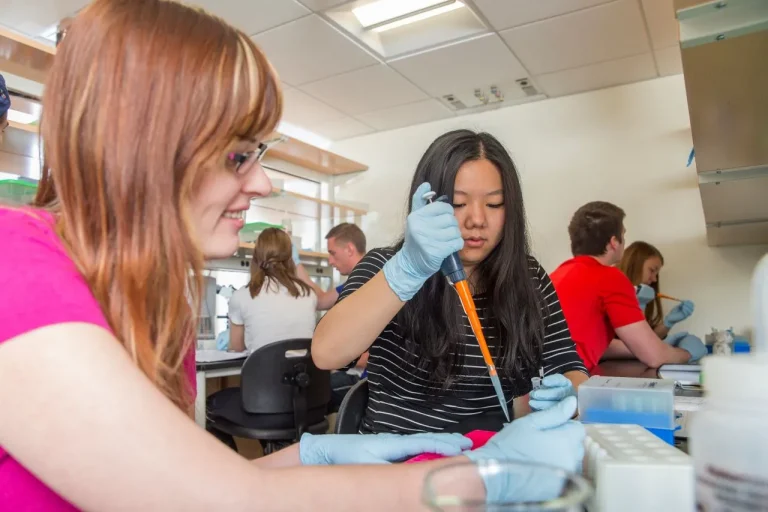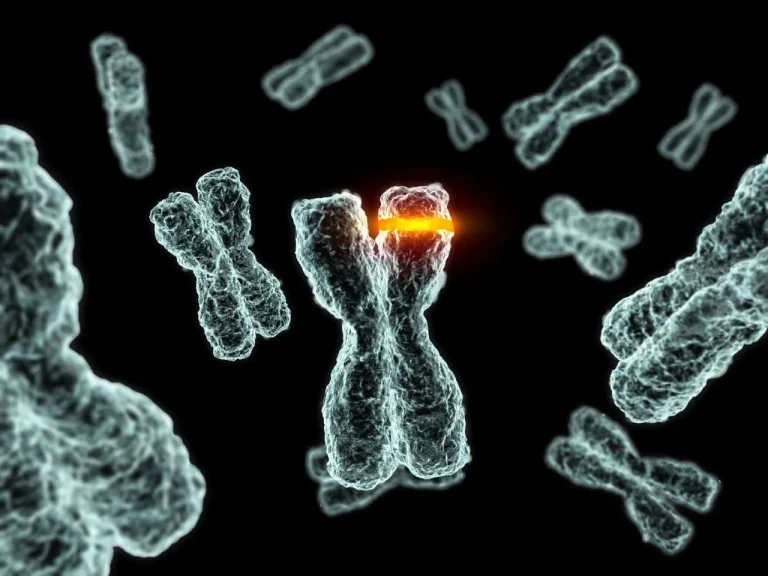What Does Procedure Mean In Science? An In-Depth Explanation
In science, a procedure refers to a defined method, process, or set of steps to systematically carry out an experiment, test a hypothesis, or conduct research. If you’re short on time, here’s a quick answer: A scientific procedure details how to perform an investigation in a reproducible, standardized way.
In this comprehensive article, we’ll explore the essential role procedures play across scientific disciplines. We’ll look at how detailed protocols lend credibility and enable reproducibility. We’ll also examine key elements of scientific procedures from materials to data analysis.
Procedures Provide Standardization
In the field of science, procedures play a crucial role in ensuring that experiments and studies are conducted in a standardized and consistent manner. By providing step-by-step instructions, procedures help researchers follow a systematic approach to testing and gathering data.
This not only ensures that the experiment can be replicated by other scientists but also allows for accurate comparisons between different studies.
Step-by-Step Instructions for Consistent Testing
Procedures in science provide researchers with a clear set of instructions on how to carry out a specific experiment or study. These step-by-step instructions outline the necessary materials, equipment, and methods to be used.
By following a standardized procedure, scientists can ensure that the variables being tested are controlled and that the experiment is conducted in a consistent manner across different trials.
For example, if a scientist is investigating the effect of temperature on the growth of plants, a procedure might include specific details on how to set up the experiment, such as the temperature range to be tested, the type of plants to be used, and the duration of the experiment.
By following the procedure precisely, researchers can minimize variations and obtain reliable and accurate data.
Procedural Controls Minimize Experimental Errors
Another important aspect of procedures in science is the inclusion of procedural controls. Procedural controls are steps or conditions that are implemented to minimize experimental errors and ensure the validity of the results.
These controls act as a reference point to compare the experimental results against, allowing researchers to identify any potential sources of error.
For instance, in a drug trial, a procedural control might involve the administration of a placebo to a control group. This allows researchers to compare the effects of the actual drug to the effects of the placebo, helping them determine whether the observed changes are due to the drug itself or other factors.
By including procedural controls, scientists can account for variables that may impact the results and ensure that their findings are accurate and reliable. This helps to maintain the integrity of the scientific process and ensures that conclusions drawn from the study are valid.
Procedures Ensure Reproducibility
Procedures are an essential part of the scientific process as they ensure reproducibility of results. In science, reproducibility refers to the ability of other researchers to obtain similar results when they follow the same procedure.
This is crucial for building a strong foundation of knowledge and establishing the validity of scientific findings.
Replication Using the Same Procedure Validates Results
When scientists conduct experiments, they document their procedures meticulously to provide a clear roadmap for others to follow. By replicating an experiment using the same procedure, other researchers can validate the results and confirm the accuracy of the initial findings.
This process helps to eliminate errors and biases, and strengthens the credibility of scientific research.
For example, imagine a study that claims a new drug effectively treats a certain disease. To ensure the validity of the findings, other scientists would need to replicate the study by following the same procedure.
If the results are consistently reproduced, it provides strong evidence that the drug is indeed effective.
Transparency Through Published Procedures
Another important aspect of procedures in science is the transparency they provide. Researchers often publish their procedures along with their findings, allowing others to scrutinize and evaluate their work.
This transparency promotes accountability and allows for constructive criticism and improvement of scientific knowledge.
By publishing procedures, scientists also enable the scientific community to build upon their work. Other researchers can use the published procedures as a starting point for further investigations or to explore related questions.
This collaborative approach fosters innovation and accelerates scientific progress.
For example, in the field of genetics, the Human Genome Project published its procedures and findings to provide a comprehensive reference for future research. This transparency allowed scientists from around the world to analyze and interpret the human genome, leading to groundbreaking discoveries and advancements in genetics.
Elements of Scientific Procedures
Stating the Research Question and Hypothesis
One of the fundamental elements of scientific procedures is stating the research question and hypothesis. When conducting a scientific experiment, researchers formulate a clear and concise research question that defines the problem they aim to investigate.
This question serves as the foundation of the entire procedure and guides the subsequent steps.
Once the research question is established, scientists develop a hypothesis. A hypothesis is an educated guess or prediction about the outcome of the experiment. It is based on existing knowledge, observations, and evidence.
The hypothesis provides a framework for the experiment and sets expectations for the results.
For example, let’s say a researcher wants to investigate the effects of caffeine on cognitive performance. The research question could be: “Does consuming caffeine improve cognitive function?” The corresponding hypothesis might be: “Consuming caffeine will enhance cognitive performance compared to a control group.”
Detailing Materials, Methods, and Apparatus
Another crucial element of scientific procedures is detailing the materials, methods, and apparatus used in the experiment. This step ensures that the experiment can be replicated by other researchers and allows for the evaluation of its validity and reliability.
The materials section lists all the substances, tools, and equipment used during the experiment. It provides a comprehensive inventory of the items necessary to carry out the research. Including specific brands, models, and quantities can be important for accuracy and consistency in replication.
The methods section outlines the step-by-step procedures followed during the experiment. It includes a clear and concise description of the experimental design, data collection methods, and data analysis techniques.
This section should be detailed enough to allow another scientist to replicate the experiment and obtain similar results.
The apparatus section describes the specific instruments or apparatus used in the experiment. It provides information on the equipment, its specifications, and any adjustments or calibrations made before the experiment.
This section is crucial for ensuring that the equipment used is suitable for the research and that any potential sources of error are accounted for.
For instance, a researcher conducting a study on plant growth might detail the materials used, such as soil, pots, seeds, and water. The methods section would outline the steps followed, including planting the seeds, providing the necessary sunlight and water, and measuring the plant growth over time.
The apparatus section would specify the tools used, such as measuring instruments for height and a light meter for monitoring sunlight exposure.
For more information on scientific procedures, you can visit Science Buddies, a reputable website that provides detailed explanations and resources on various scientific topics.
Writing Effective Scientific Procedures
When it comes to conducting scientific research, writing effective procedures is crucial. These procedures serve as a roadmap for researchers, guiding them through the steps necessary to carry out their experiments accurately and reliably.
Here, we will explore the key elements of writing effective scientific procedures that are clear, thorough, and objective.
Clarity, Thoroughness, and Objectivity
Clarity is of utmost importance when writing scientific procedures. It is essential to provide clear and concise instructions that leave no room for ambiguity. Researchers should use precise language, avoiding jargon and technical terms that may confuse readers.
By doing so, they ensure that the procedure can be easily understood and replicated by others in the scientific community.
Thoroughness is another crucial aspect of writing effective scientific procedures. Every step of the experiment should be detailed, leaving no room for assumptions or guesswork. This includes providing accurate measurements, specifying equipment and materials needed, and outlining any safety precautions that need to be taken.
By being thorough, researchers can ensure that their experiments can be replicated accurately and produce reliable results.
Objectivity is also vital when writing scientific procedures. Researchers should strive to maintain an unbiased and neutral tone throughout the procedure. This means avoiding personal opinions or assumptions and sticking to facts and evidence.
By doing so, researchers can ensure that their procedures are objective and can be trusted by the scientific community.
Following Established Protocol Guidelines
When writing scientific procedures, it is important to follow established protocol guidelines. These guidelines provide a framework for how procedures should be written and help ensure consistency and reliability in scientific research.
Scientists often refer to established protocols, such as those published by reputable organizations like the National Institutes of Health (NIH) or the World Health Organization (WHO).
By following these guidelines, researchers can benefit from the expertise and knowledge of the scientific community. Established protocols often include best practices, recommended techniques, and standardized formats for writing procedures.
This not only helps researchers write more effective procedures but also enhances the reproducibility and comparability of scientific experiments.
Conclusion
In summary, scientific procedures are vital to systematic, standardized, and reproducible research. They enable transparency, credibility, and critical analysis of investigations across every scientific field.







